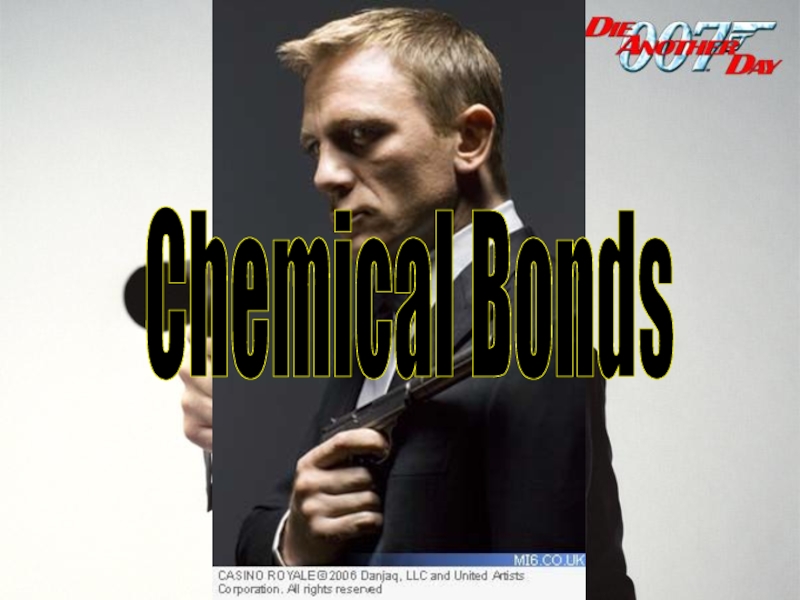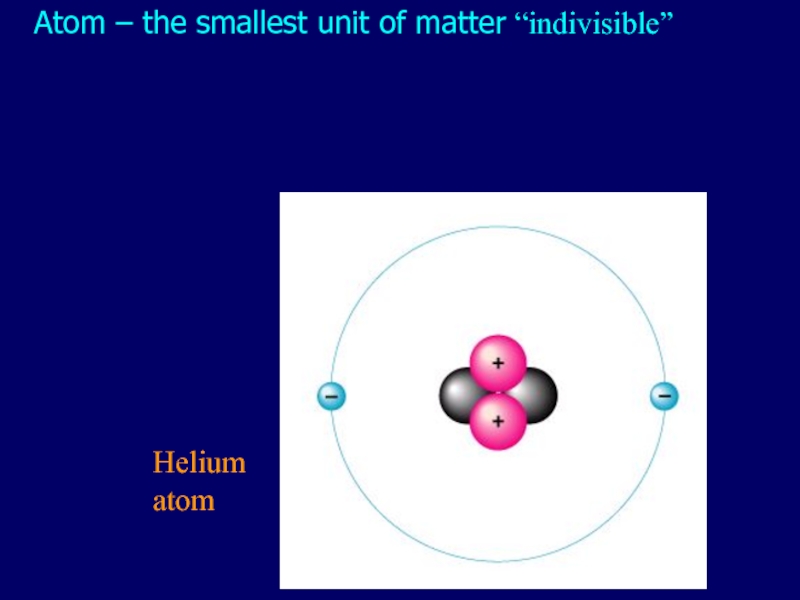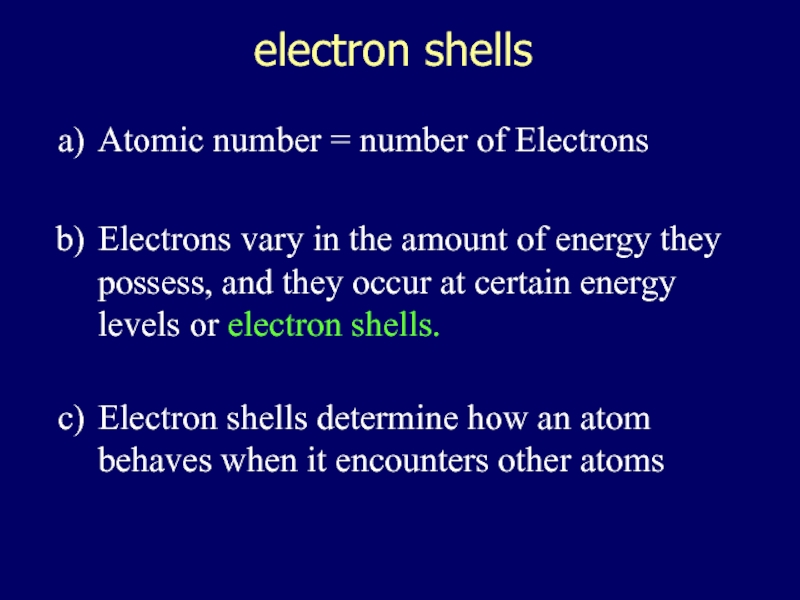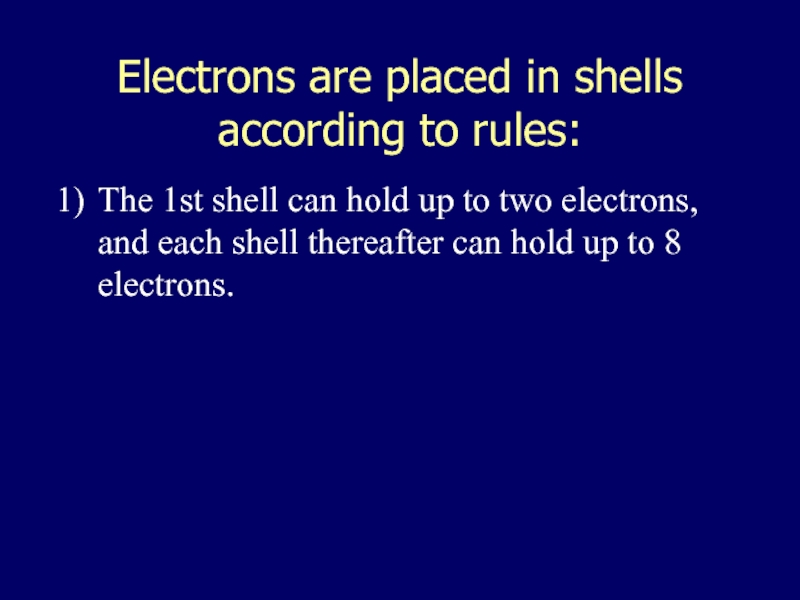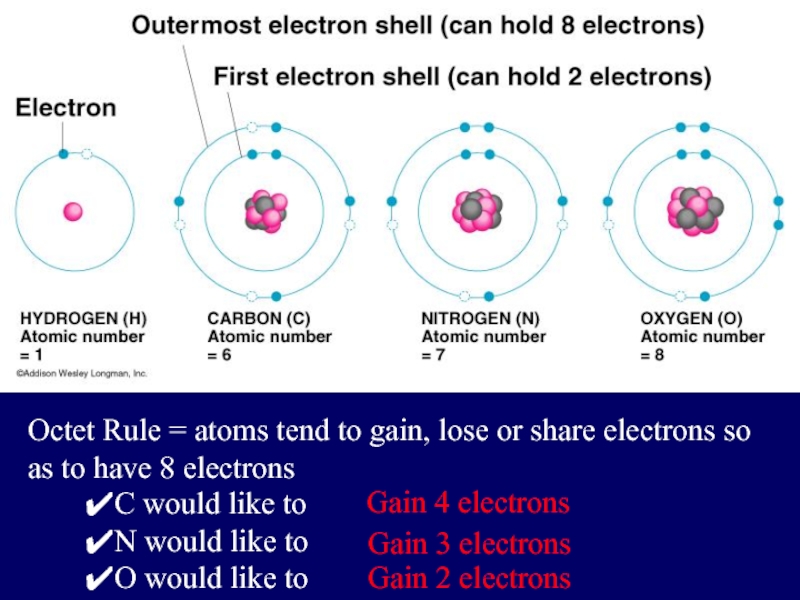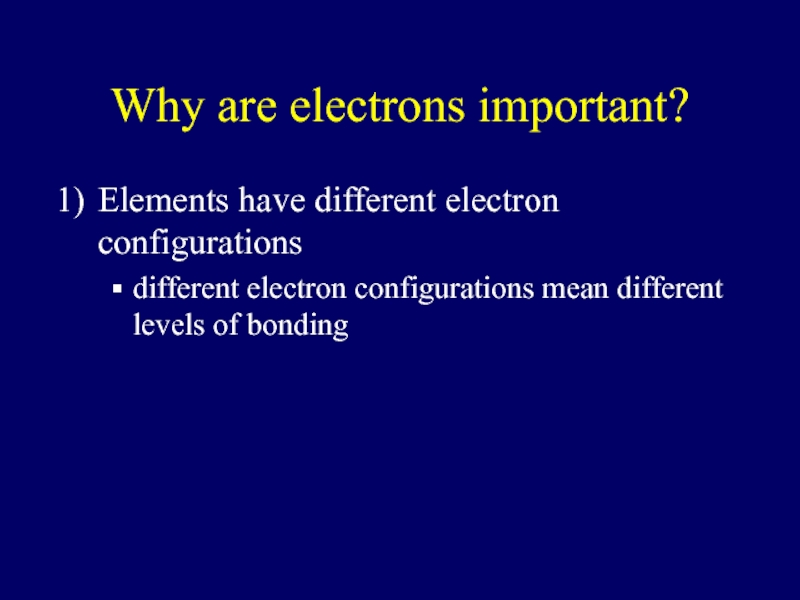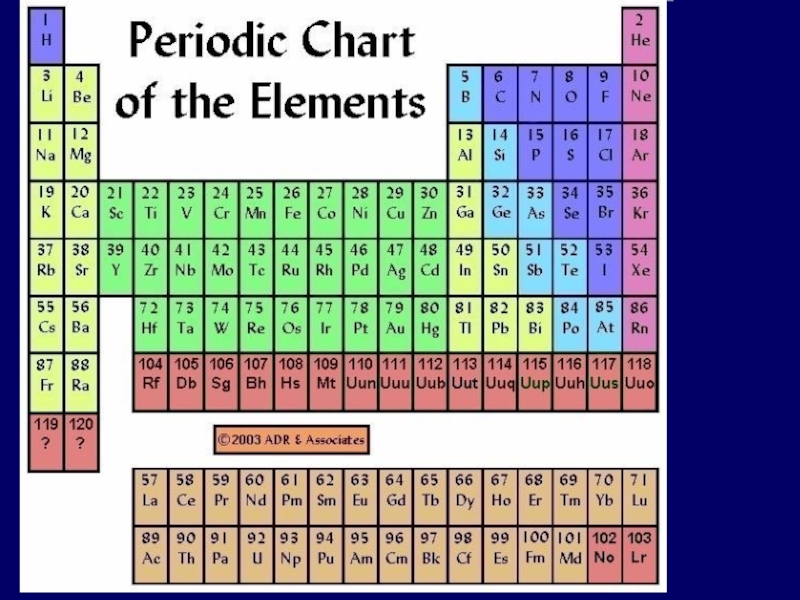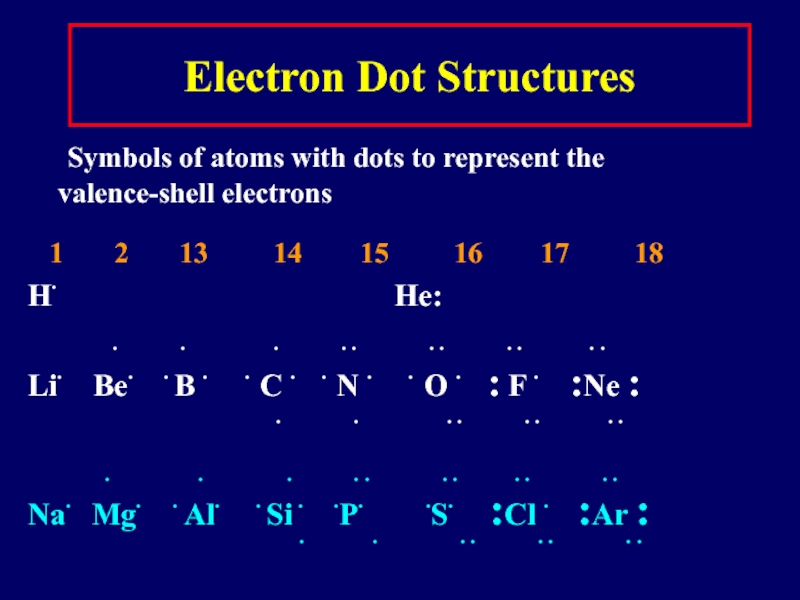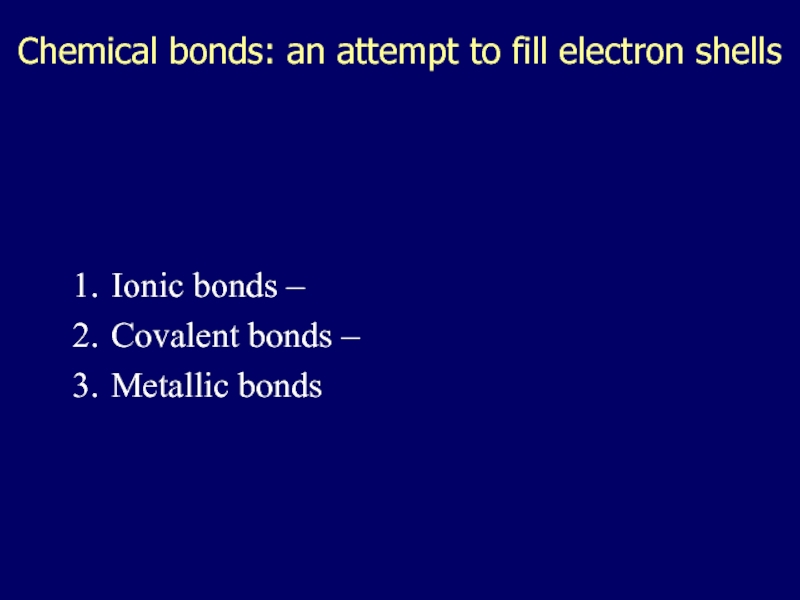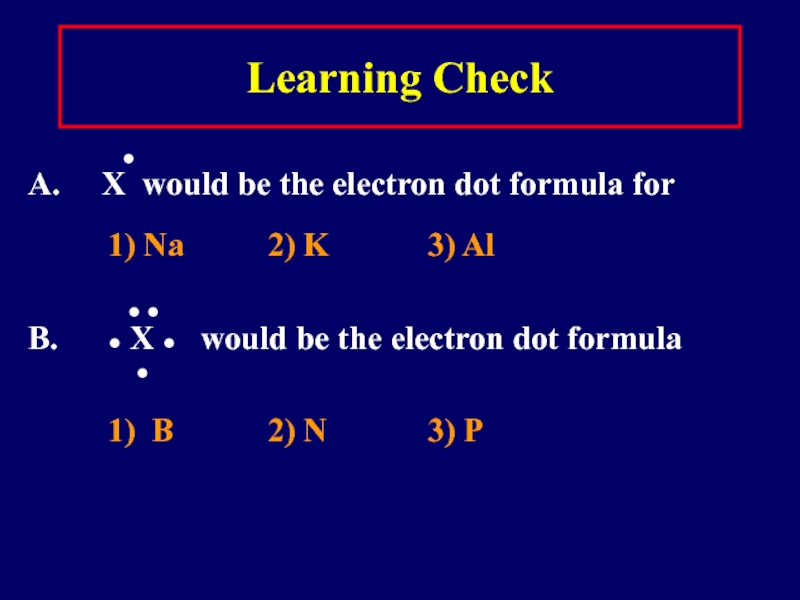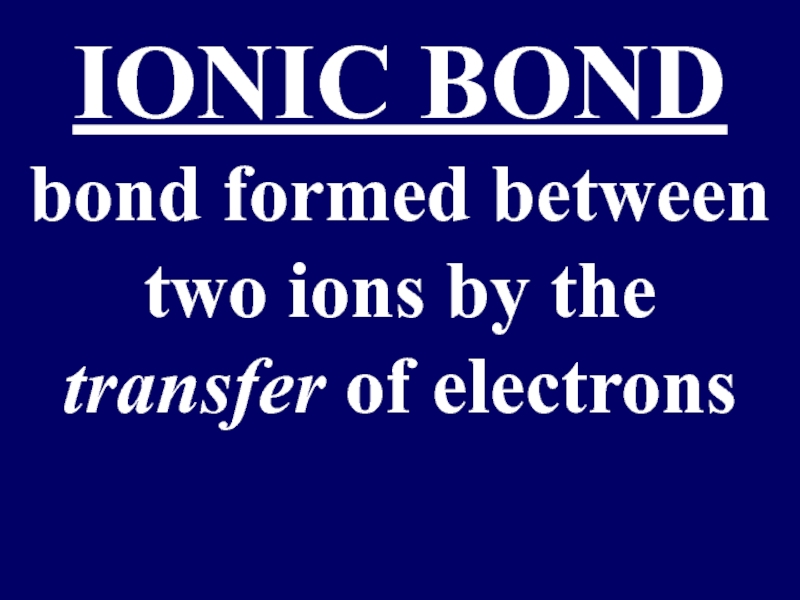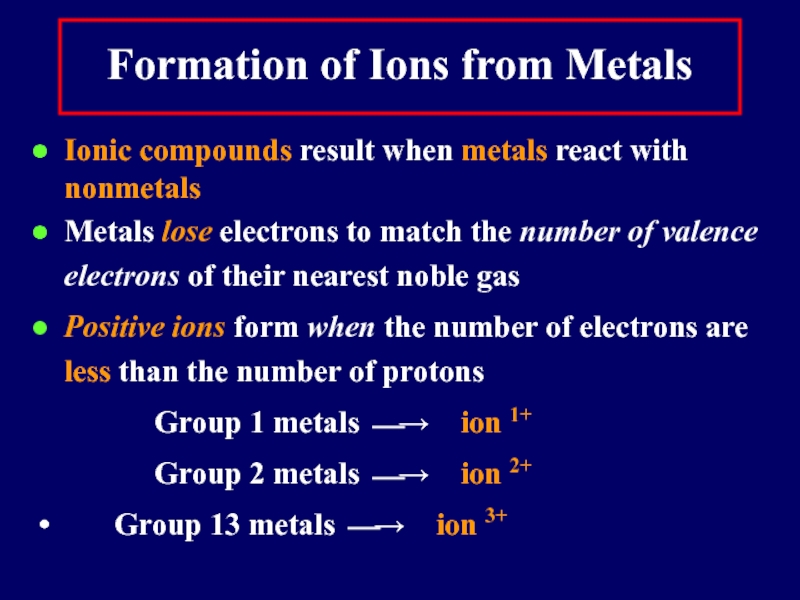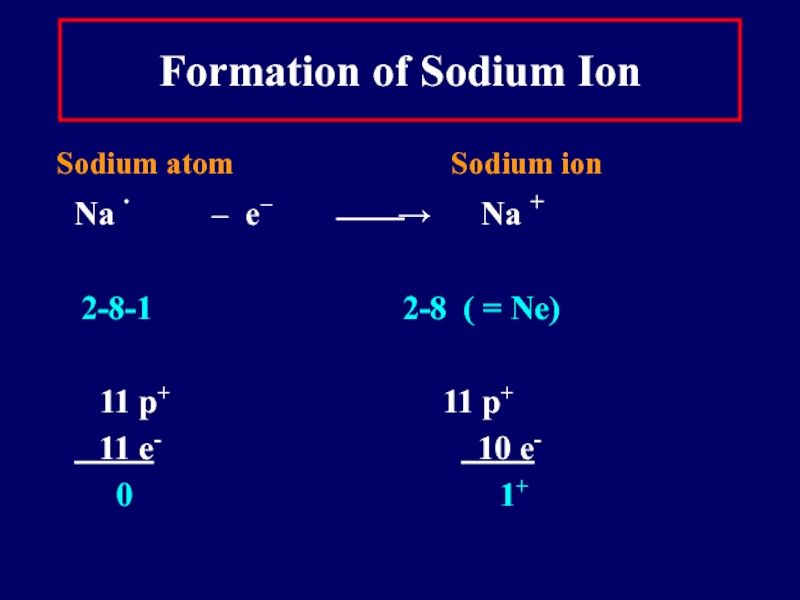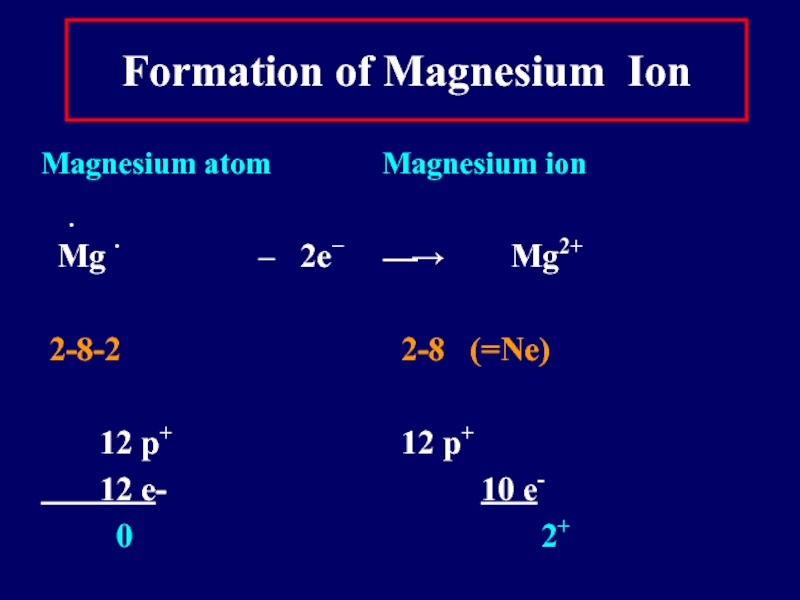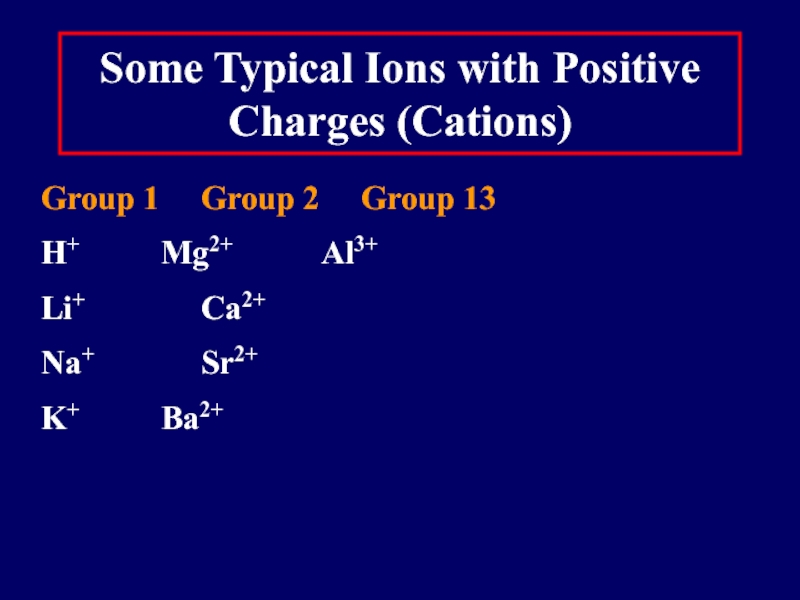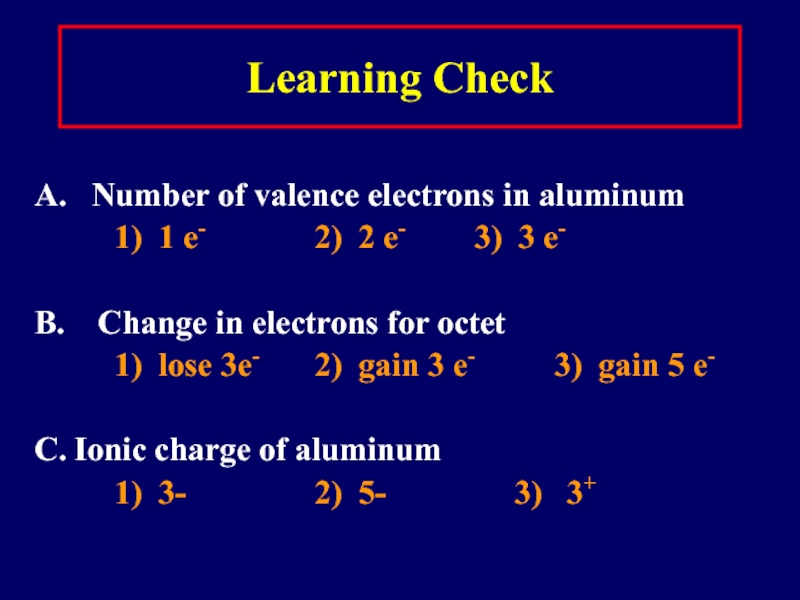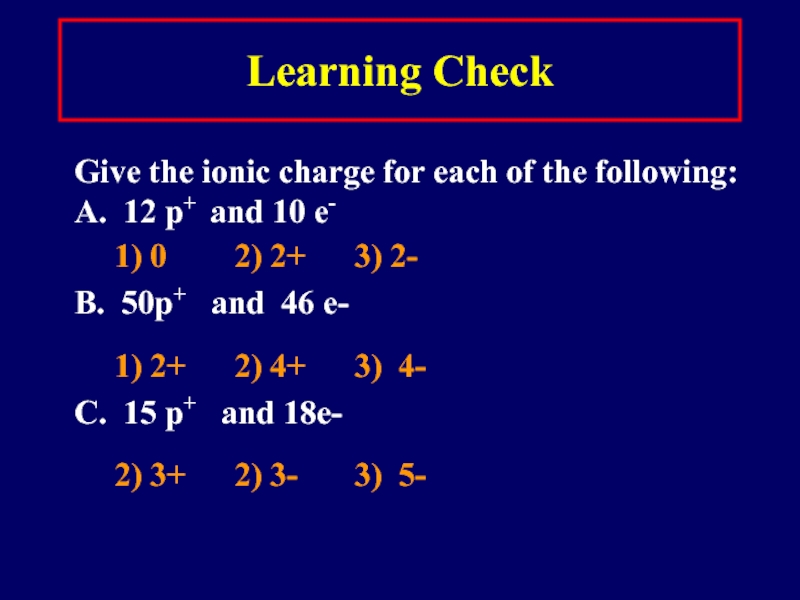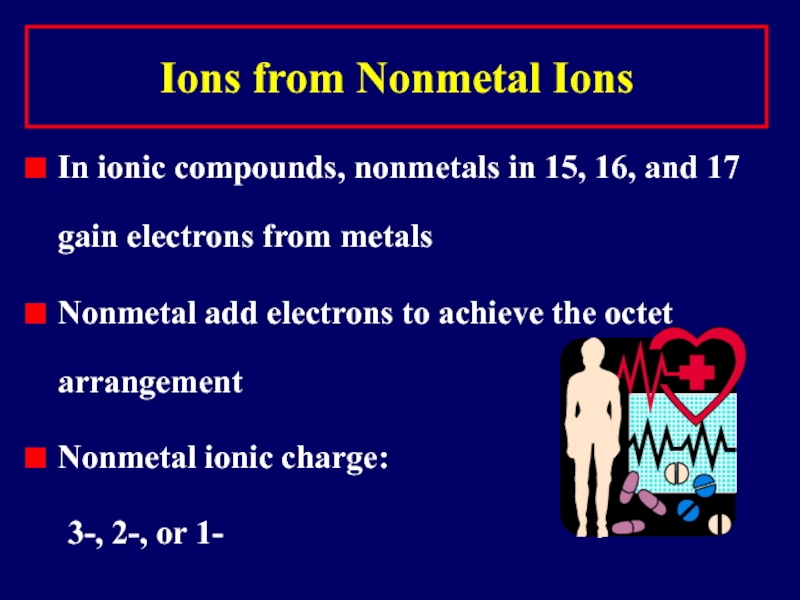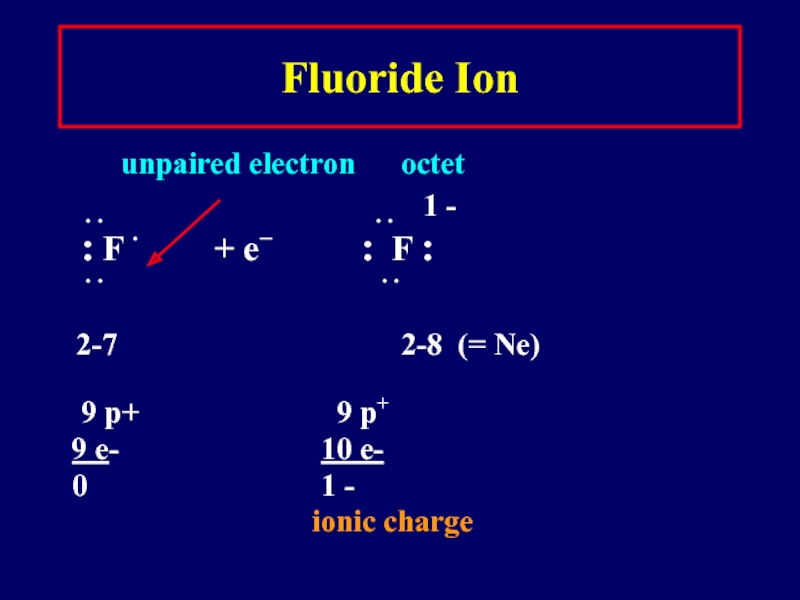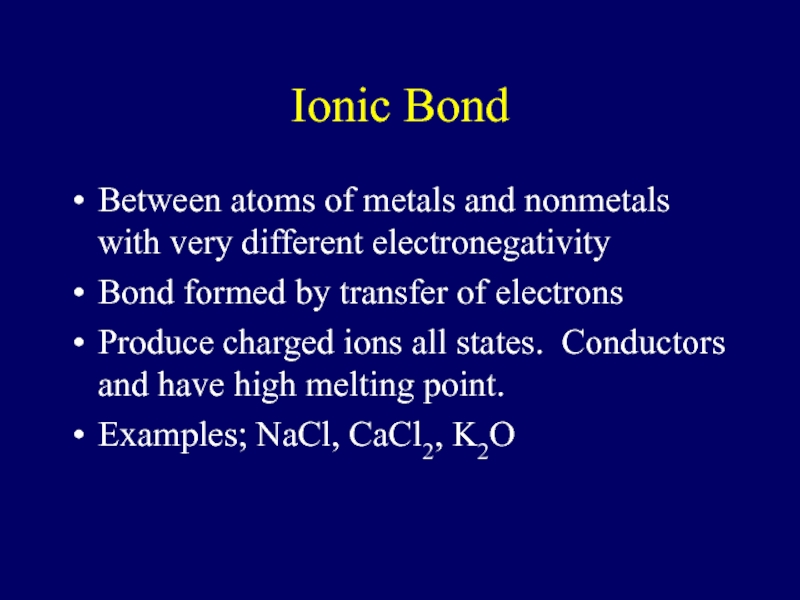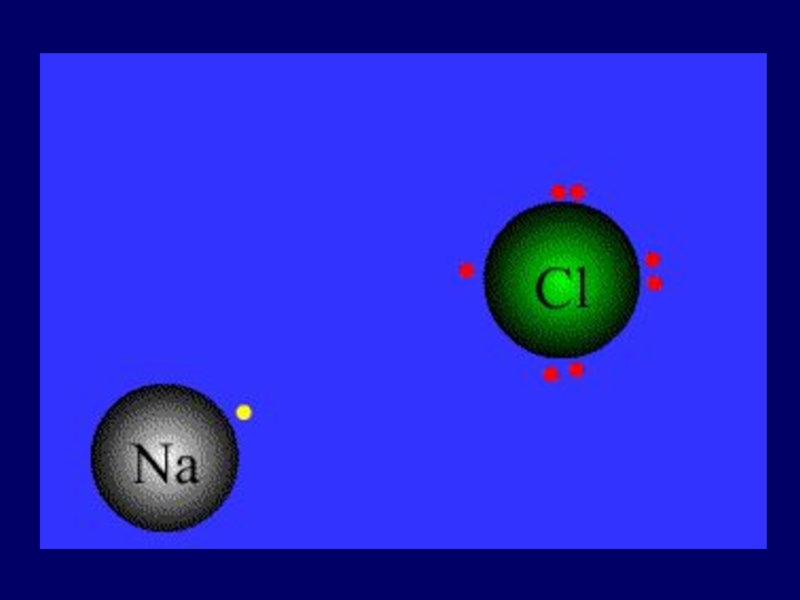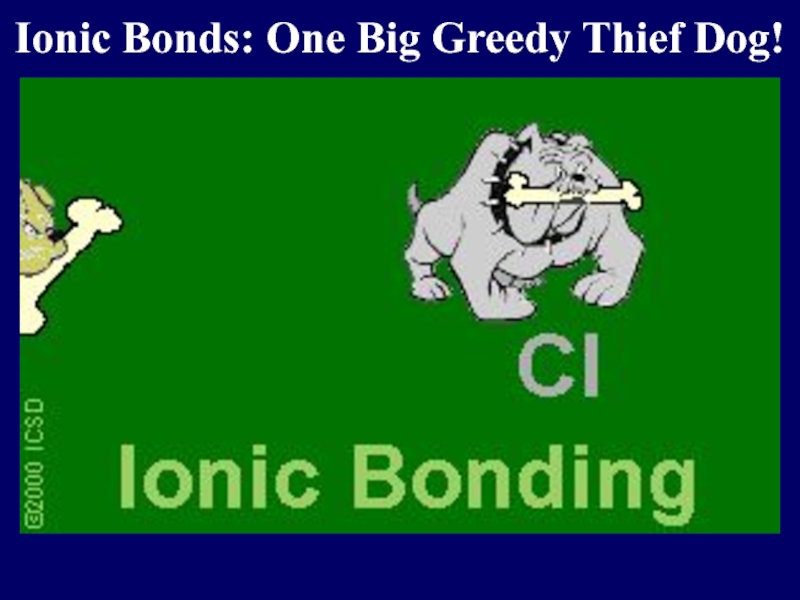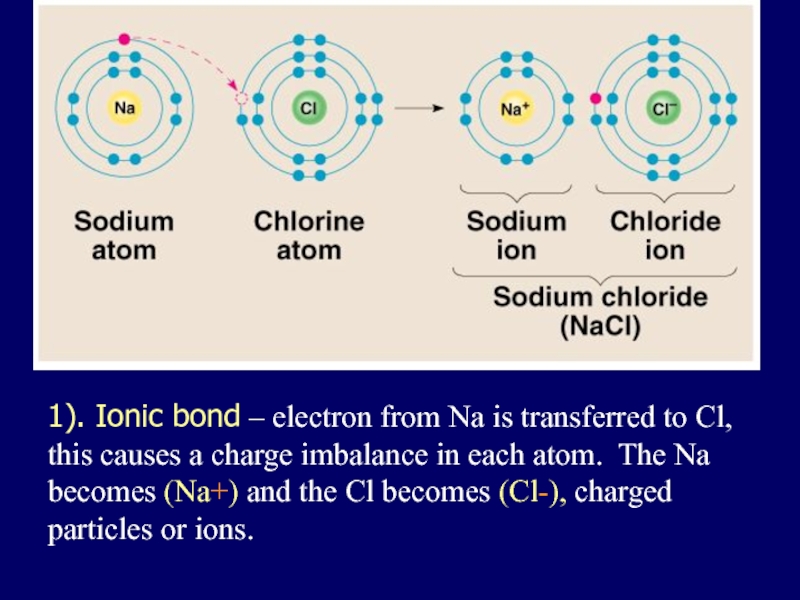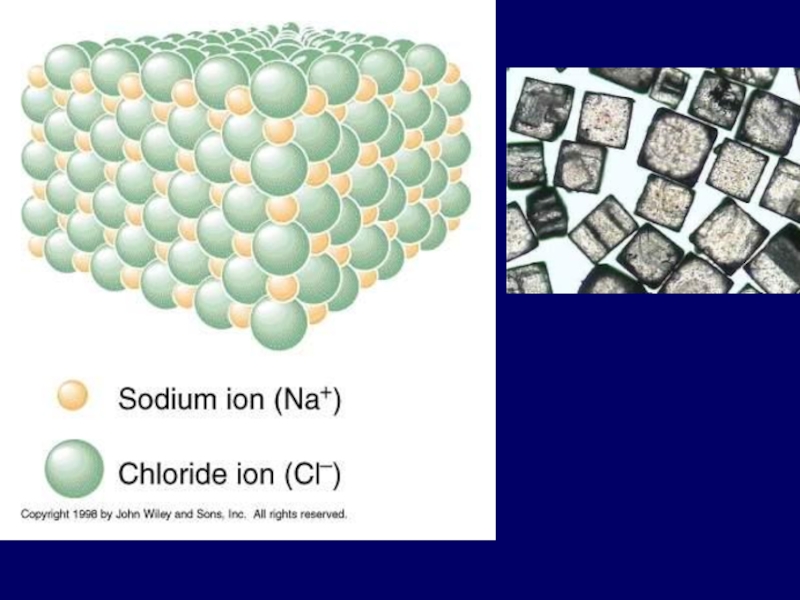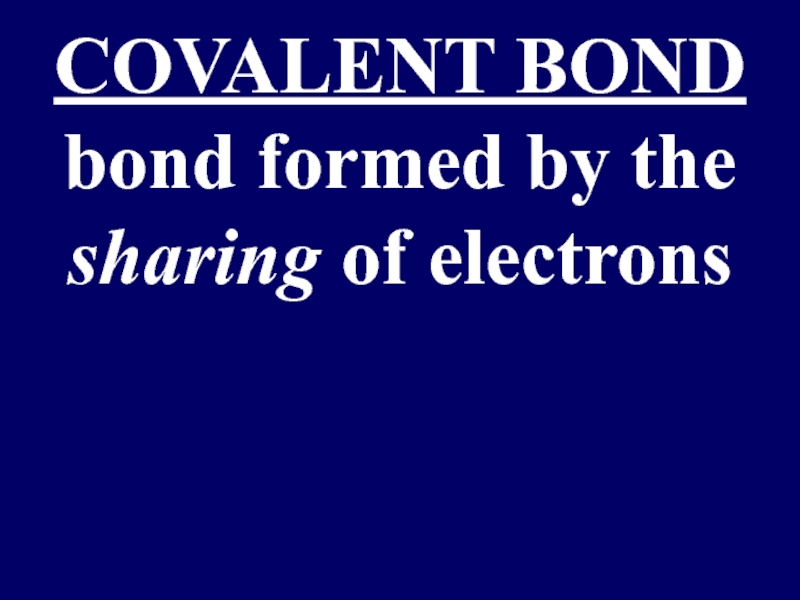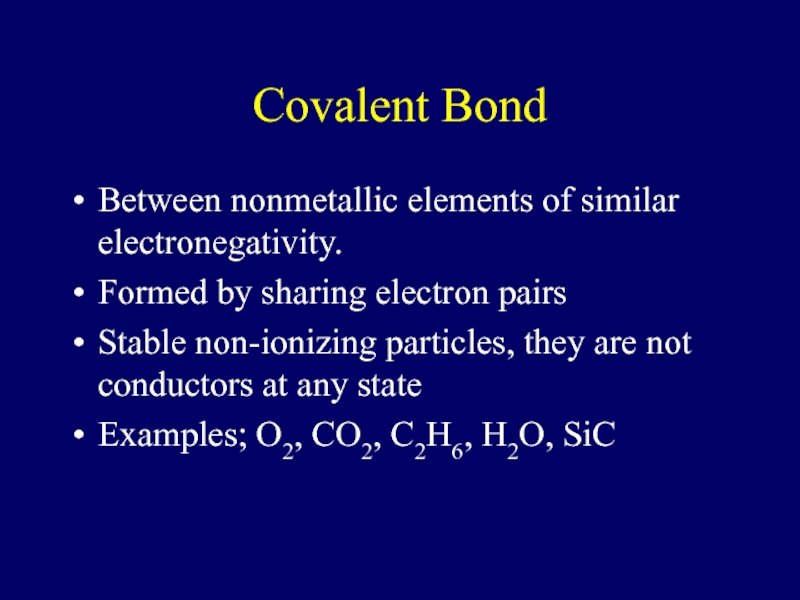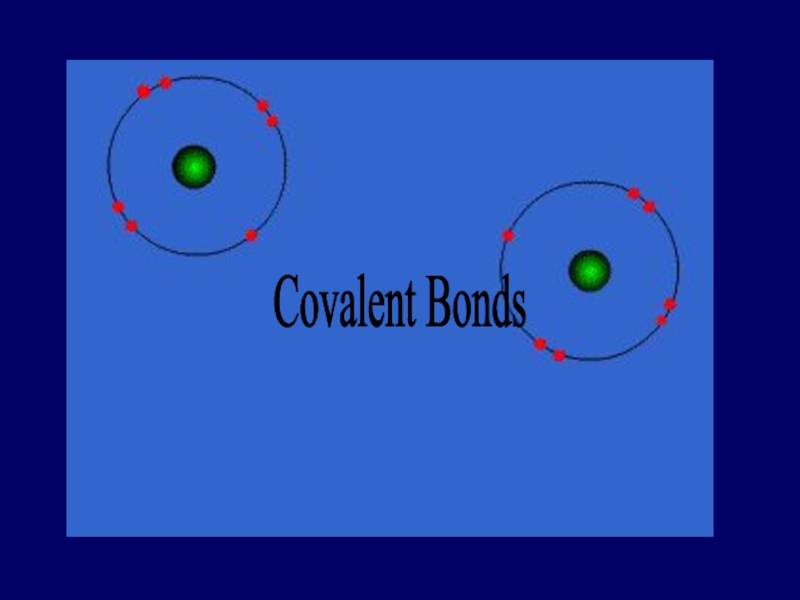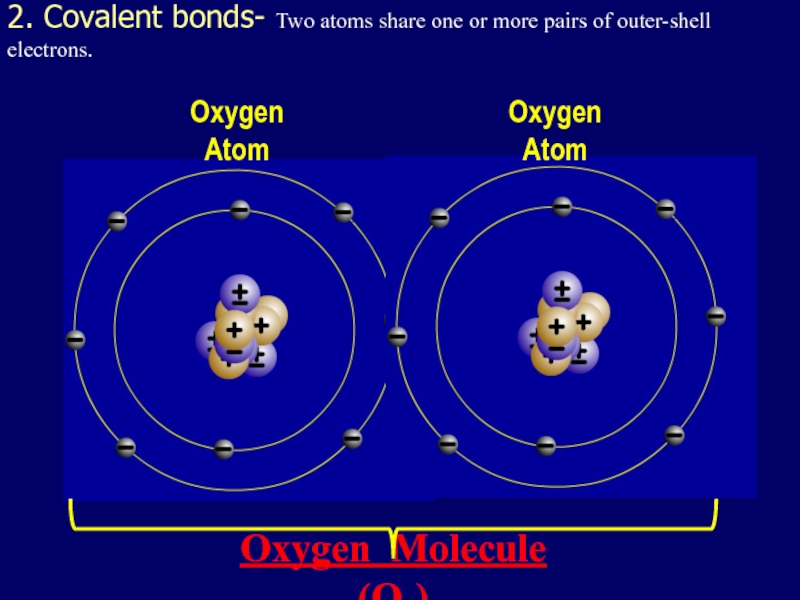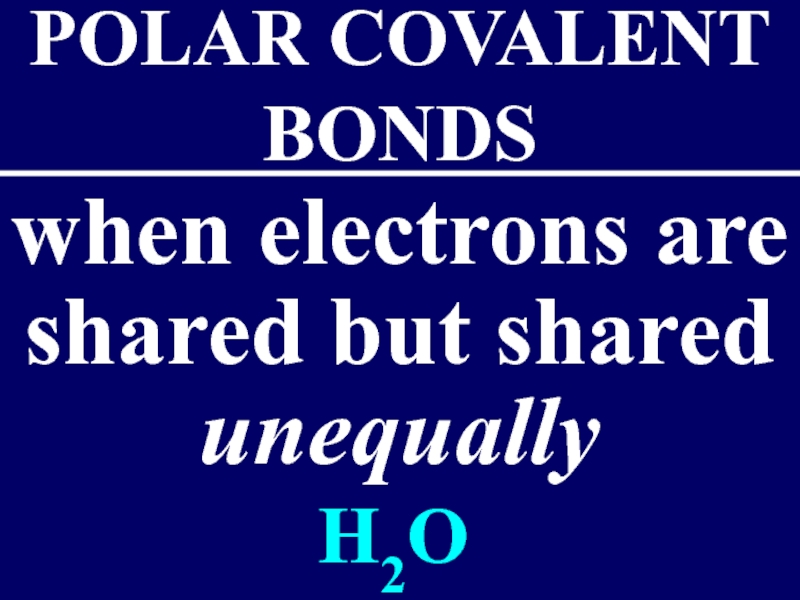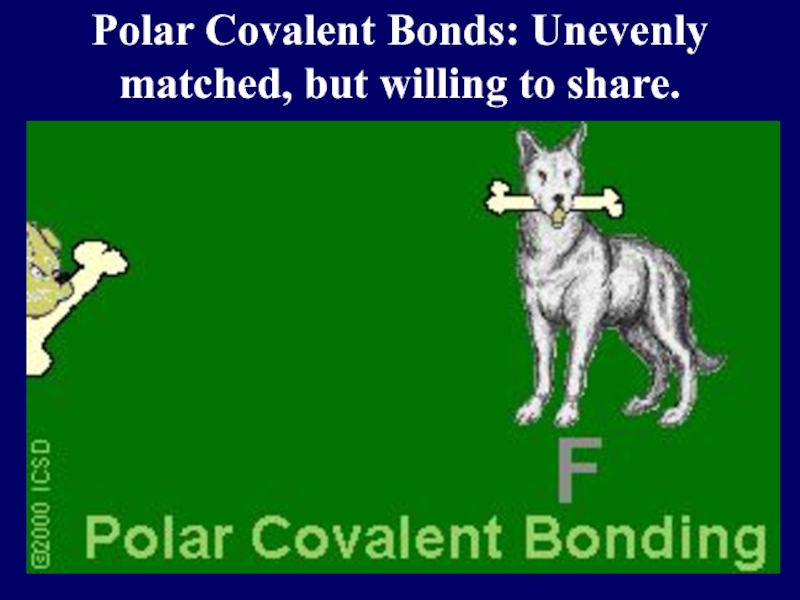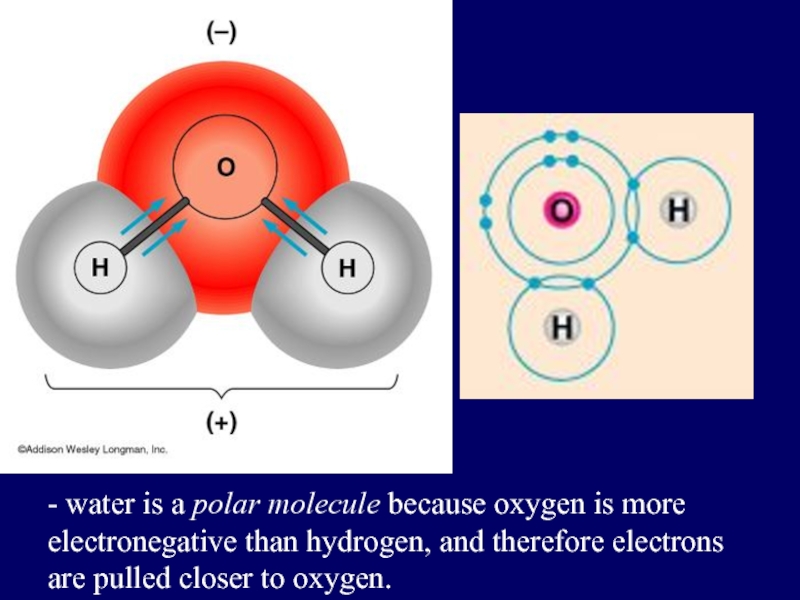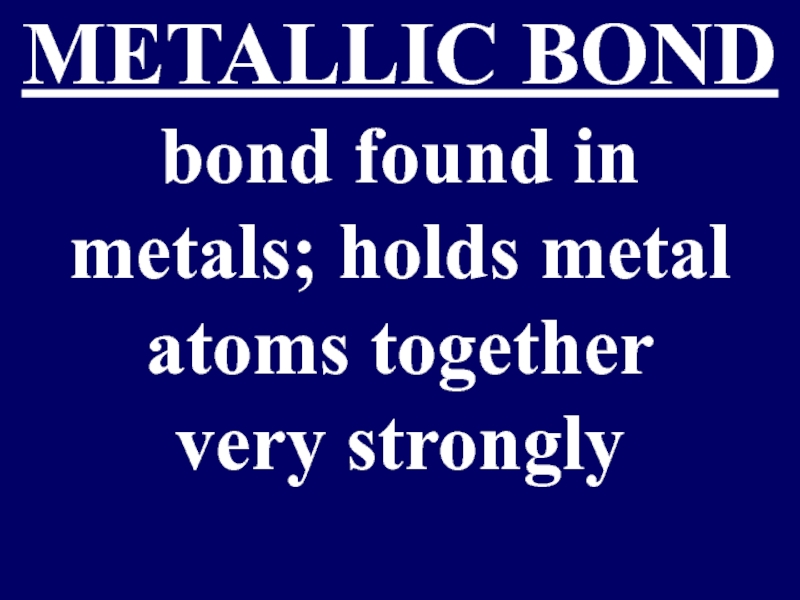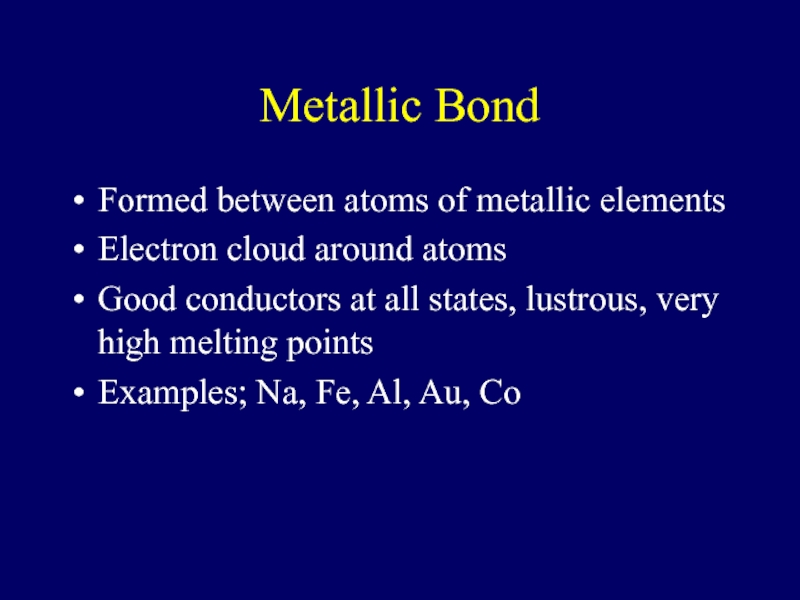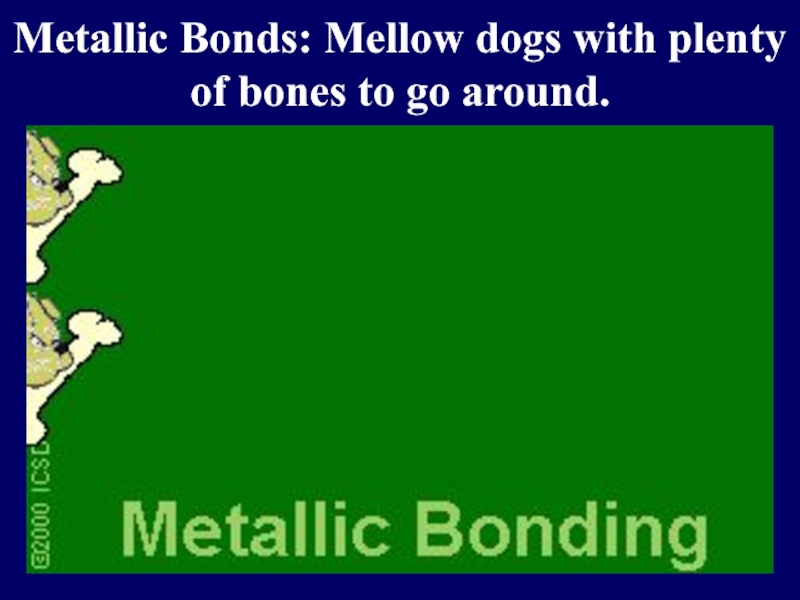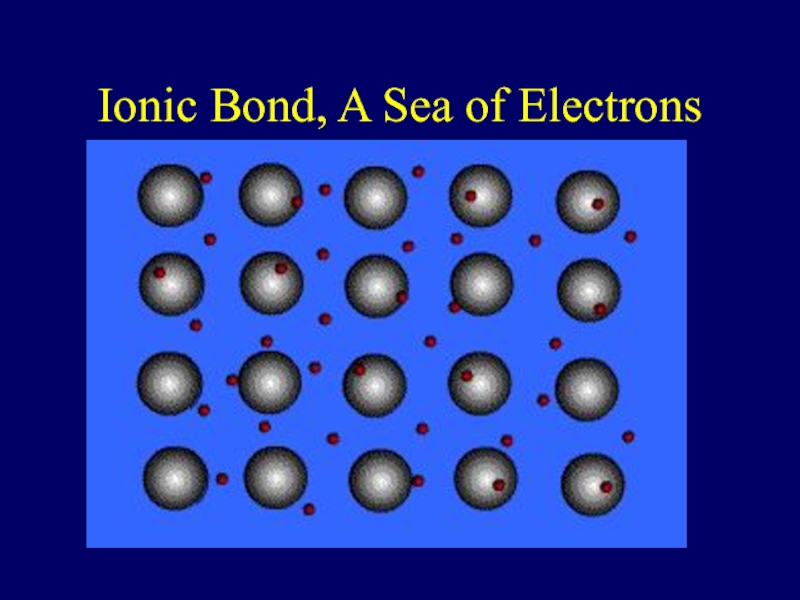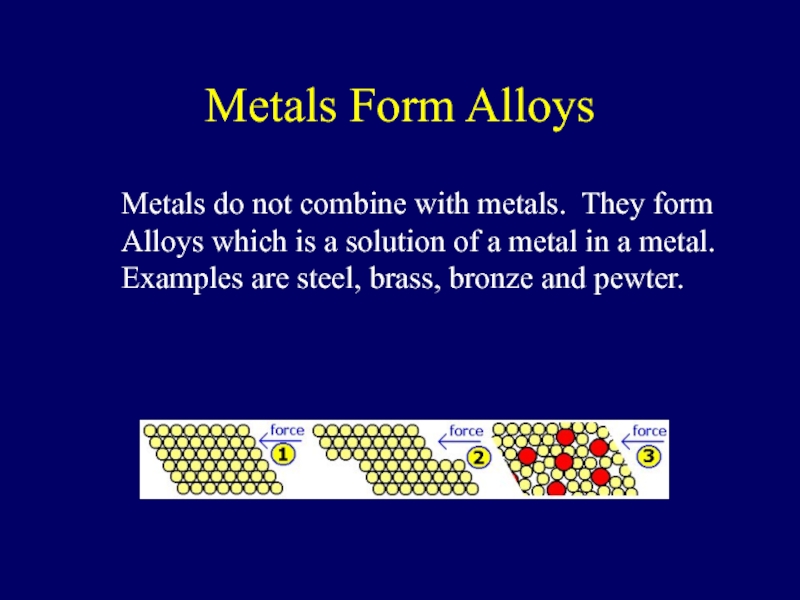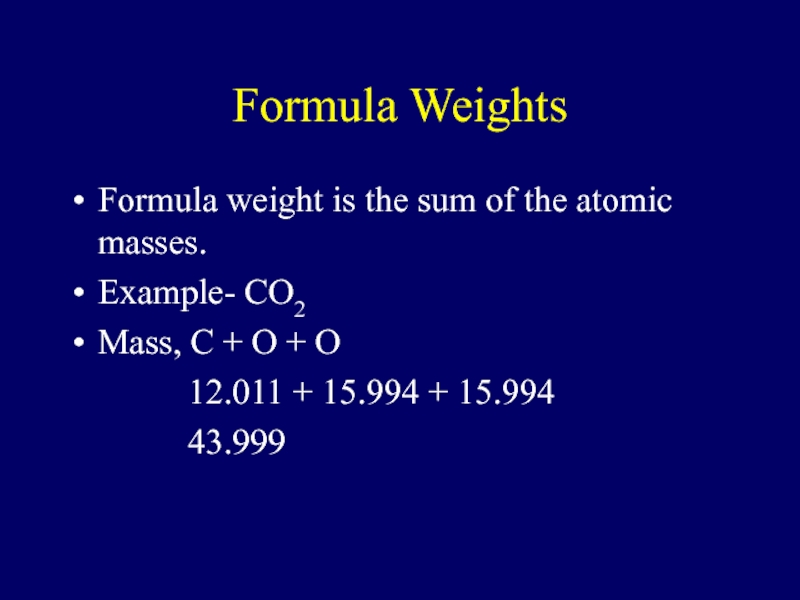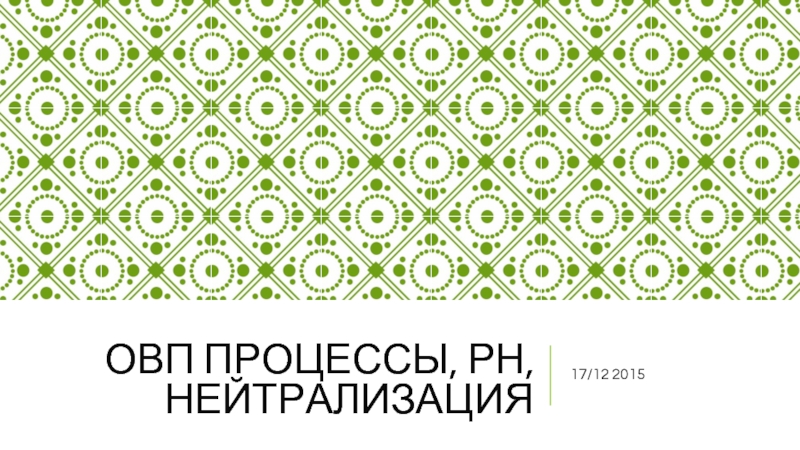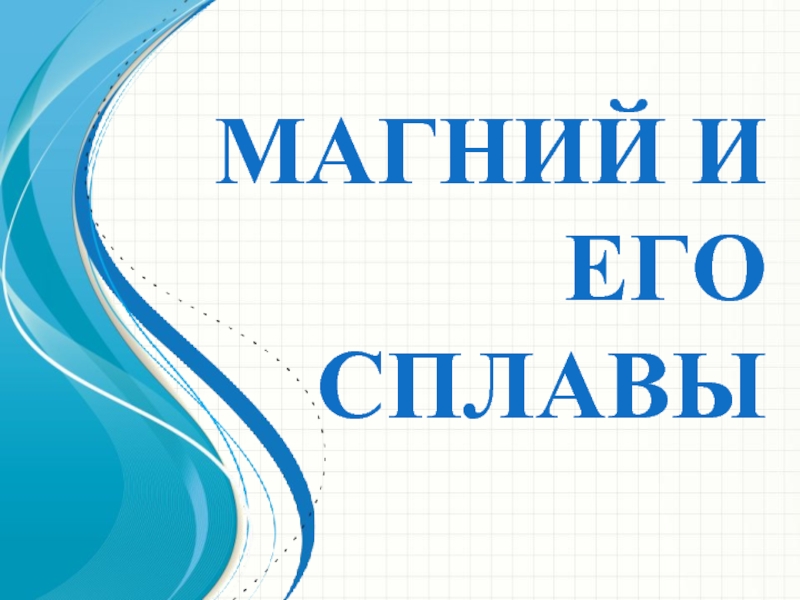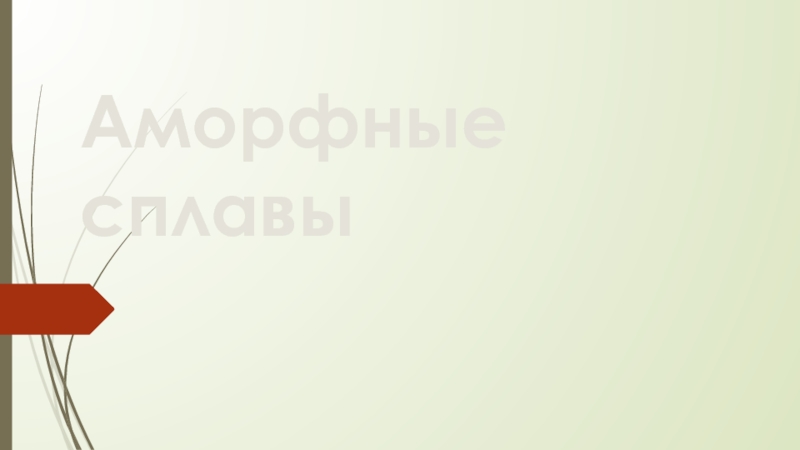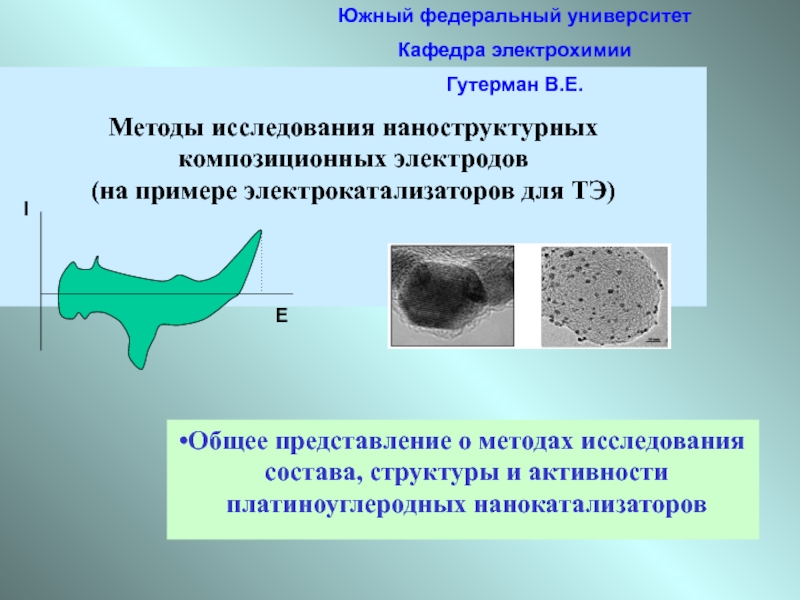- Главная
- Разное
- Дизайн
- Бизнес и предпринимательство
- Аналитика
- Образование
- Развлечения
- Красота и здоровье
- Финансы
- Государство
- Путешествия
- Спорт
- Недвижимость
- Армия
- Графика
- Культурология
- Еда и кулинария
- Лингвистика
- Английский язык
- Астрономия
- Алгебра
- Биология
- География
- Детские презентации
- Информатика
- История
- Литература
- Маркетинг
- Математика
- Медицина
- Менеджмент
- Музыка
- МХК
- Немецкий язык
- ОБЖ
- Обществознание
- Окружающий мир
- Педагогика
- Русский язык
- Технология
- Физика
- Философия
- Химия
- Шаблоны, картинки для презентаций
- Экология
- Экономика
- Юриспруденция
Chemical bonds презентация
Содержание
- 1. Chemical bonds
- 2. Atom – the smallest unit of matter “indivisible” Helium atom
- 3. electron shells Atomic number = number of
- 4. Electrons are placed in shells according to
- 5. Octet Rule = atoms tend to gain,
- 6. Why are electrons important? Elements have different
- 9. Electron Dot Structures Symbols of atoms with
- 10. Chemical bonds: an attempt to fill electron
- 11. Learning Check
- 12. IONIC BOND bond formed between
- 13. Formation of Ions from Metals
- 14. Formation of Sodium Ion Sodium atom
- 15. Formation of Magnesium Ion Magnesium atom
- 16. Some Typical Ions with Positive Charges (Cations)
- 17. Learning Check A. Number of
- 18. Solution A. Number of valence
- 19. Learning Check Give the ionic charge for
- 20. Ions from Nonmetal Ions In ionic compounds,
- 21. Fluoride Ion unpaired electron octet
- 22. Ionic Bond Between atoms of metals and
- 24. Ionic Bonds: One Big Greedy Thief Dog!
- 25. 1). Ionic bond – electron from Na
- 27. COVALENT BOND bond formed by the sharing of electrons
- 28. Covalent Bond Between nonmetallic elements of similar
- 29. Covalent Bonds
- 30. Bonds in all the polyatomic ions and diatomics are all covalent bonds
- 31. when electrons are shared equally NONPOLAR COVALENT BONDS H2 or Cl2
- 32. 2. Covalent bonds- Two atoms share one
- 33. when electrons are shared but shared unequally POLAR COVALENT BONDS H2O
- 34. Polar Covalent Bonds: Unevenly matched, but willing to share.
- 35. - water is a polar molecule because
- 36. METALLIC BOND bond found in metals; holds metal atoms together very strongly
- 37. Metallic Bond Formed between atoms of metallic
- 38. Metallic Bonds: Mellow dogs with plenty of bones to go around.
- 39. Ionic Bond, A Sea of Electrons
- 40. Metals Form Alloys Metals do not combine
- 41. Formula Weights Formula weight is the sum
- 42. Practice Compute the mass of the following
Слайд 3electron shells
Atomic number = number of Electrons
Electrons vary in the amount
of energy they possess, and they occur at certain energy levels or electron shells.
Electron shells determine how an atom behaves when it encounters other atoms
Electron shells determine how an atom behaves when it encounters other atoms
Слайд 4Electrons are placed in shells according to rules:
The 1st shell can
hold up to two electrons, and each shell thereafter can hold up to 8 electrons.
Слайд 5Octet Rule = atoms tend to gain, lose or share electrons
so as to have 8 electrons
C would like to
N would like to
O would like to
Gain 4 electrons
Gain 3 electrons
Gain 2 electrons
Слайд 6Why are electrons important?
Elements have different electron configurations
different electron configurations mean
different levels of bonding
Слайд 9Electron Dot Structures
Symbols of atoms with dots to represent the valence-shell
electrons
1 2 13 14 15 16 17 18
H∙ He:
∙ ∙ ∙ ∙ ∙ ∙ ∙ ∙ ∙ ∙ ∙
Li∙ Be∙ ∙ B ∙ ∙ C ∙ ∙ N ∙ ∙ O ∙ : F ∙ :Ne :
∙ ∙ ∙ ∙ ∙ ∙ ∙ ∙
∙ ∙ ∙ ∙ ∙ ∙ ∙ ∙ ∙ ∙ ∙
Na∙ Mg∙ ∙ Al∙ ∙ Si ∙ ∙P∙ ∙S∙ :Cl ∙ :Ar :
∙ ∙ ∙ ∙ ∙ ∙ ∙ ∙
1 2 13 14 15 16 17 18
H∙ He:
∙ ∙ ∙ ∙ ∙ ∙ ∙ ∙ ∙ ∙ ∙
Li∙ Be∙ ∙ B ∙ ∙ C ∙ ∙ N ∙ ∙ O ∙ : F ∙ :Ne :
∙ ∙ ∙ ∙ ∙ ∙ ∙ ∙
∙ ∙ ∙ ∙ ∙ ∙ ∙ ∙ ∙ ∙ ∙
Na∙ Mg∙ ∙ Al∙ ∙ Si ∙ ∙P∙ ∙S∙ :Cl ∙ :Ar :
∙ ∙ ∙ ∙ ∙ ∙ ∙ ∙
Слайд 10Chemical bonds: an attempt to fill electron shells
Ionic bonds –
Covalent
bonds –
Metallic bonds
Metallic bonds
Слайд 11Learning Check
●
A. X would be the electron dot formula for
1) Na 2) K 3) Al
● ●
B. ● X ● would be the electron dot formula
●
1) B 2) N 3) P
A. X would be the electron dot formula for
1) Na 2) K 3) Al
● ●
B. ● X ● would be the electron dot formula
●
1) B 2) N 3) P
Слайд 13
Formation of Ions from Metals
Ionic compounds result when metals react with
nonmetals
Metals lose electrons to match the number of valence electrons of their nearest noble gas
Positive ions form when the number of electrons are less than the number of protons
Group 1 metals ⎯→ ion 1+
Group 2 metals ⎯→ ion 2+
Group 13 metals ⎯→ ion 3+
Metals lose electrons to match the number of valence electrons of their nearest noble gas
Positive ions form when the number of electrons are less than the number of protons
Group 1 metals ⎯→ ion 1+
Group 2 metals ⎯→ ion 2+
Group 13 metals ⎯→ ion 3+
Слайд 14Formation of Sodium Ion
Sodium atom
Sodium ion
Na ∙ – e− ⎯⎯→ Na +
2-8-1 2-8 ( = Ne)
11 p+ 11 p+
11 e- 10 e-
0 1+
Na ∙ – e− ⎯⎯→ Na +
2-8-1 2-8 ( = Ne)
11 p+ 11 p+
11 e- 10 e-
0 1+
Слайд 15Formation of Magnesium Ion
Magnesium atom
Magnesium ion
∙
Mg ∙ – 2e− ⎯→ Mg2+
2-8-2 2-8 (=Ne)
12 p+ 12 p+
12 e- 10 e-
0 2+
∙
Mg ∙ – 2e− ⎯→ Mg2+
2-8-2 2-8 (=Ne)
12 p+ 12 p+
12 e- 10 e-
0 2+
Слайд 16Some Typical Ions with Positive Charges (Cations)
Group 1 Group 2 Group 13
H+ Mg2+ Al3+
Li+ Ca2+
Na+ Sr2+
K+ Ba2+
Слайд 17Learning Check
A. Number of valence electrons in aluminum
1) 1
e- 2) 2 e- 3) 3 e-
B. Change in electrons for octet
1) lose 3e- 2) gain 3 e- 3) gain 5 e-
C. Ionic charge of aluminum
1) 3- 2) 5- 3) 3+
B. Change in electrons for octet
1) lose 3e- 2) gain 3 e- 3) gain 5 e-
C. Ionic charge of aluminum
1) 3- 2) 5- 3) 3+
Слайд 18Solution
A. Number of valence electrons in aluminum
3) 3 e-
B.
Change in electrons for octet
1) lose 3e-
C. Ionic charge of aluminum
3) 3+
1) lose 3e-
C. Ionic charge of aluminum
3) 3+
Слайд 19Learning Check
Give the ionic charge for each of the following:
A. 12
p+ and 10 e-
1) 0 2) 2+ 3) 2-
B. 50p+ and 46 e-
1) 2+ 2) 4+ 3) 4-
C. 15 p+ and 18e-
2) 3+ 2) 3- 3) 5-
1) 0 2) 2+ 3) 2-
B. 50p+ and 46 e-
1) 2+ 2) 4+ 3) 4-
C. 15 p+ and 18e-
2) 3+ 2) 3- 3) 5-
Слайд 20Ions from Nonmetal Ions
In ionic compounds, nonmetals in 15, 16, and
17 gain electrons from metals
Nonmetal add electrons to achieve the octet arrangement
Nonmetal ionic charge:
3-, 2-, or 1-
Nonmetal add electrons to achieve the octet arrangement
Nonmetal ionic charge:
3-, 2-, or 1-
Слайд 21Fluoride Ion
unpaired electron octet
∙ ∙
∙ ∙ 1 -
: F ∙ + e− : F :
∙ ∙ ∙ ∙
2-7 2-8 (= Ne)
9 p+ 9 p+
9 e- 10 e-
0 1 -
ionic charge
: F ∙ + e− : F :
∙ ∙ ∙ ∙
2-7 2-8 (= Ne)
9 p+ 9 p+
9 e- 10 e-
0 1 -
ionic charge
Слайд 22Ionic Bond
Between atoms of metals and nonmetals with very different electronegativity
Bond
formed by transfer of electrons
Produce charged ions all states. Conductors and have high melting point.
Examples; NaCl, CaCl2, K2O
Produce charged ions all states. Conductors and have high melting point.
Examples; NaCl, CaCl2, K2O
Слайд 251). Ionic bond – electron from Na is transferred to Cl,
this causes a charge imbalance in each atom. The Na becomes (Na+) and the Cl becomes (Cl-), charged particles or ions.
Слайд 28Covalent Bond
Between nonmetallic elements of similar electronegativity.
Formed by sharing electron pairs
Stable
non-ionizing particles, they are not conductors at any state
Examples; O2, CO2, C2H6, H2O, SiC
Examples; O2, CO2, C2H6, H2O, SiC
Слайд 322. Covalent bonds- Two atoms share one or more pairs of
outer-shell electrons.
Oxygen Atom
Oxygen Atom
Oxygen Molecule (O2)
Слайд 35- water is a polar molecule because oxygen is more electronegative
than hydrogen, and therefore electrons are pulled closer to oxygen.
Слайд 37Metallic Bond
Formed between atoms of metallic elements
Electron cloud around atoms
Good
conductors at all states, lustrous, very high melting points
Examples; Na, Fe, Al, Au, Co
Examples; Na, Fe, Al, Au, Co
Слайд 40Metals Form Alloys
Metals do not combine with metals. They form
Alloys
which is a solution of a metal in a metal.
Examples are steel, brass, bronze and pewter.
Examples are steel, brass, bronze and pewter.
Слайд 41Formula Weights
Formula weight is the sum of the atomic masses.
Example- CO2
Mass,
C + O + O
12.011 + 15.994 + 15.994
43.999
12.011 + 15.994 + 15.994
43.999
Слайд 42Practice
Compute the mass of the following compounds round to nearest tenth
& state type of bond:
NaCl;
23 + 35 = 58; Ionic Bond
C2H6;
24 + 6 = 30; Covalent Bond
Na(CO3)2;
23 + 2(12 + 3x16) = 123; Ionic & Covalent
NaCl;
23 + 35 = 58; Ionic Bond
C2H6;
24 + 6 = 30; Covalent Bond
Na(CO3)2;
23 + 2(12 + 3x16) = 123; Ionic & Covalent
